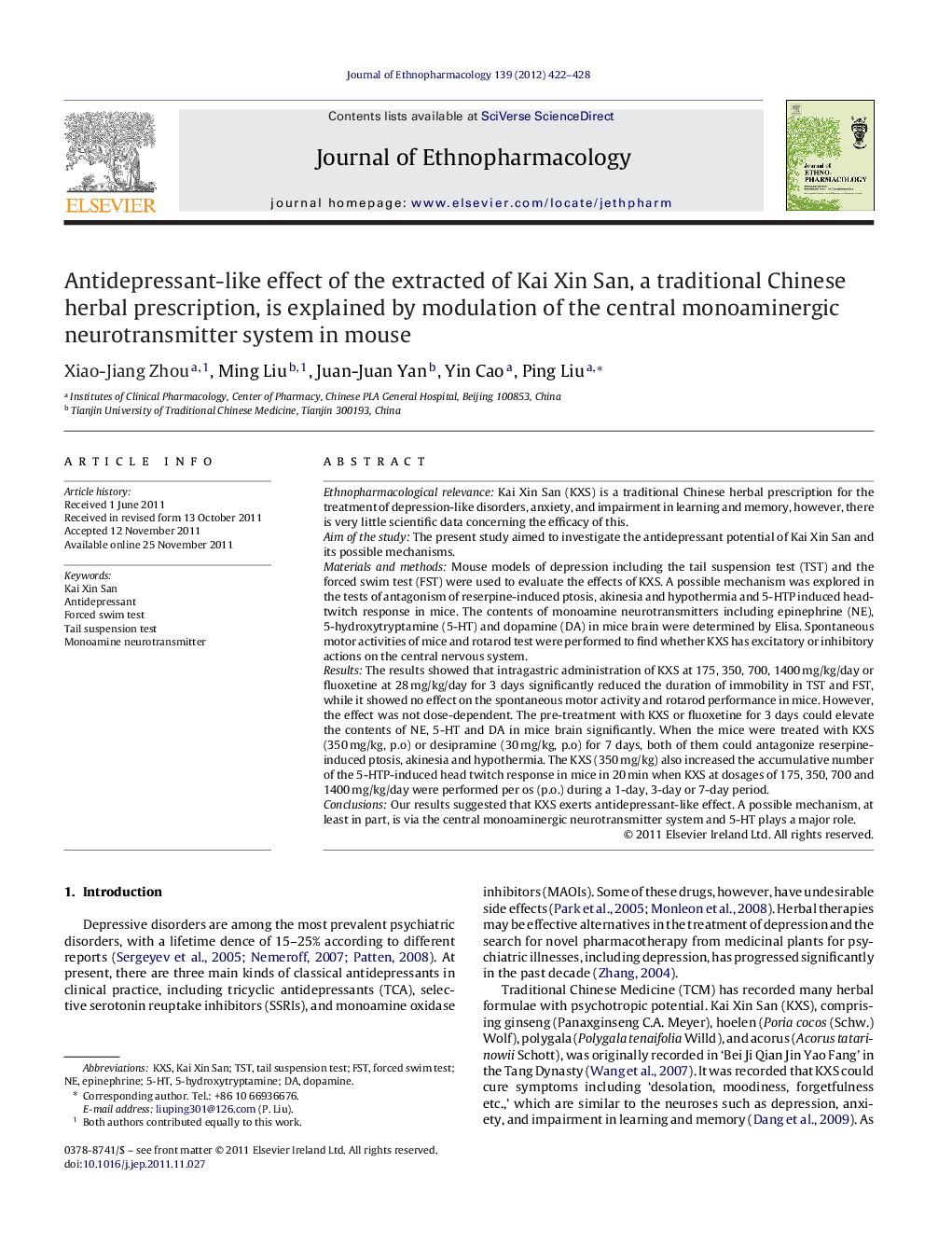| کد مقاله | کد نشریه | سال انتشار | مقاله انگلیسی | نسخه تمام متن |
|---|---|---|---|---|
| 5839819 | 1124000 | 2012 | 7 صفحه PDF | دانلود رایگان |

Ethnopharmacological relevanceKai Xin San (KXS) is a traditional Chinese herbal prescription for the treatment of depression-like disorders, anxiety, and impairment in learning and memory, however, there is very little scientific data concerning the efficacy of this.Aim of the studyThe present study aimed to investigate the antidepressant potential of Kai Xin San and its possible mechanisms.Materials and methodsMouse models of depression including the tail suspension test (TST) and the forced swim test (FST) were used to evaluate the effects of KXS. A possible mechanism was explored in the tests of antagonism of reserpine-induced ptosis, akinesia and hypothermia and 5-HTP induced head-twitch response in mice. The contents of monoamine neurotransmitters including epinephrine (NE), 5-hydroxytryptamine (5-HT) and dopamine (DA) in mice brain were determined by Elisa. Spontaneous motor activities of mice and rotarod test were performed to find whether KXS has excitatory or inhibitory actions on the central nervous system.ResultsThe results showed that intragastric administration of KXS at 175, 350, 700, 1400Â mg/kg/day or fluoxetine at 28Â mg/kg/day for 3 days significantly reduced the duration of immobility in TST and FST, while it showed no effect on the spontaneous motor activity and rotarod performance in mice. However, the effect was not dose-dependent. The pre-treatment with KXS or fluoxetine for 3 days could elevate the contents of NE, 5-HT and DA in mice brain significantly. When the mice were treated with KXS (350Â mg/kg, p.o) or desipramine (30Â mg/kg, p.o) for 7 days, both of them could antagonize reserpine-induced ptosis, akinesia and hypothermia. The KXS (350Â mg/kg) also increased the accumulative number of the 5-HTP-induced head twitch response in mice in 20Â min when KXS at dosages of 175, 350, 700 and 1400Â mg/kg/day were performed per os (p.o.) during a 1-day, 3-day or 7-day period.ConclusionsOur results suggested that KXS exerts antidepressant-like effect. A possible mechanism, at least in part, is via the central monoaminergic neurotransmitter system and 5-HT plays a major role.
188
Journal: Journal of Ethnopharmacology - Volume 139, Issue 2, 31 January 2012, Pages 422-428